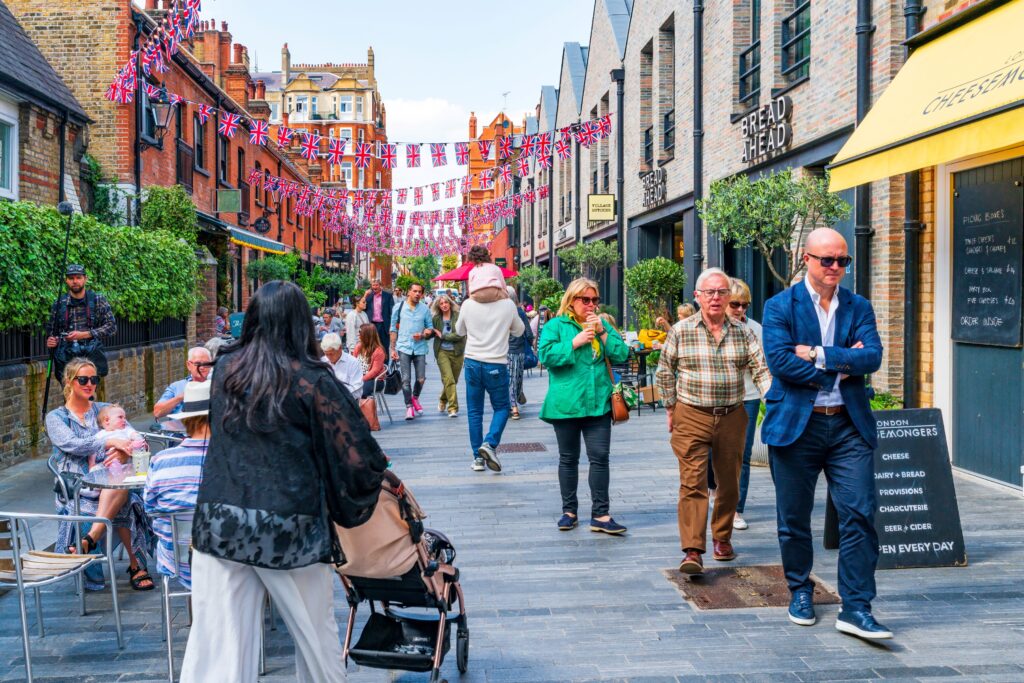Living Streets, the UK charity for everyday walking, recently launched the 3rd edition of its Pedestrian Pound report, refreshing the evidence on the economic contribution of walking and wheeling to local high streets.
The benefits of designing for improved walkability can be wide-reaching – from increased spend on local high streets to reduced loneliness for local people to improved surface water runoff. Likewise, stakeholders will evaluate the impact of public realm investment using different measures of success.
The new Pedestrian Pound report is therefore structured around four evaluation themes:
- Economic impacts relating both to local high street footfall and spend but also wider employment and productivity impacts
- Health and wellbeing impacts covering both physical and mental health
- Community impacts including social inclusion, equality and diversity, and addressing the risks of gentrification
- Environmental impacts including climate adaptation through urban cooling, sustainable drainage and biodiversity
Our founder, Martin Wedderburn, was one of the reviewers of the main report and he edited the Evaluation Briefing that accompanies the report, which aims to provide general advice on which metrics to measure for different types of intervention and points practitioners in the direction of a range of relevant appraisal and evaluation tools.
Martin has worked on many methodologies for the measurement and evaluation of walkability for almost 20 years, including the Valuing Urban Realm Toolkit that brought together a range of evidence-based approaches to evaluation. “It is rewarding to see that methodologies developed over ten years ago to measure and value walkability are still finding use today,” he said. “But the role of our high streets is changing, as are the challenges they face, and this report provides an updated and holistic view of the evidence. It was a privilege to work with the Transport for Quality of Life led team who have such energy and commitment towards both research quality and meaningful stakeholder engagement.”




